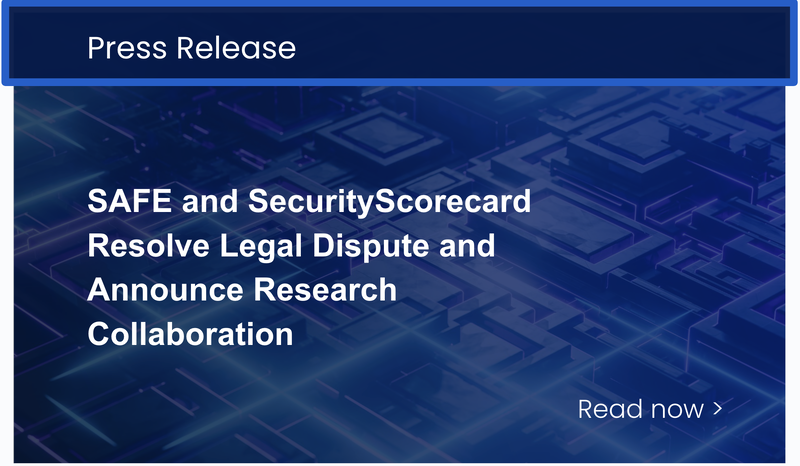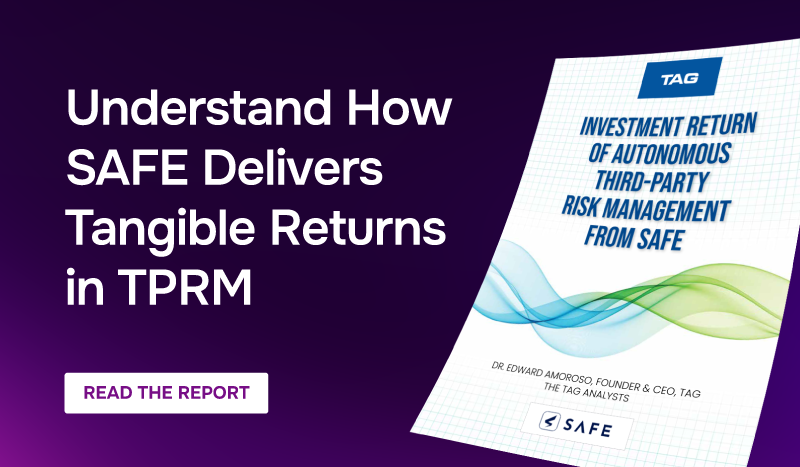Create, edit, and execute risk treatment plans tailored to your organization’s needs
In today’s rapidly evolving threat landscape, managing cyber risk is more critical than ever. CISOs and security teams often face the daunting challenge of assessing risks and deciding how to respond to them efficiently. At SAFE, we’ve heard our customers loud and clear—managing risk treatment should be intuitive, actionable, and, most importantly, impactful to your business.
That’s why I’m excited to announce the release of SAFE’s Risk Treatment Workflow, a comprehensive solution designed to help organizations create, manage, and execute risk treatment plans seamlessly across various levels—be it at the Group, Risk Scenario, or Control level.
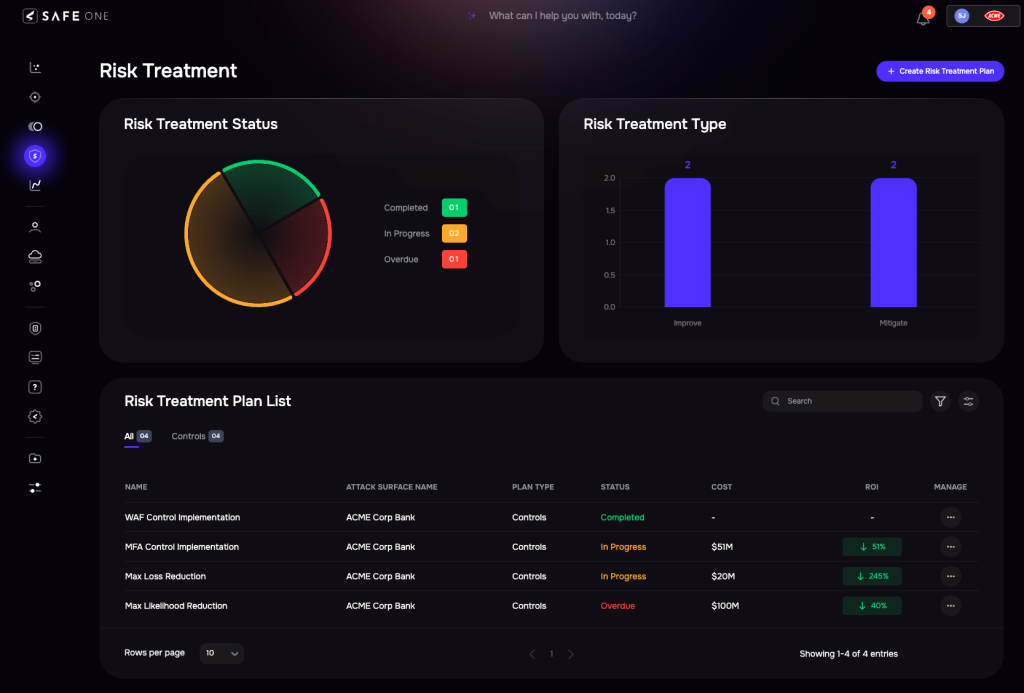
Our goal is to make risk treatment not just easier, but more valuable by offering an integrated approach that connects risk assessment with actionable steps, driving meaningful business outcomes.
1. Visibility into Your Risk Treatment Plans
With the Risk Treatment Workflow, you get a clear, unified view of all your risks and their current treatment status —whether completed, in progress, or overdue. This holistic view allows you to quickly identify which risks are actively being managed and where immediate attention is needed.
Whether you’re dealing with control implementation or working on mitigating findings, this system brings all your efforts into one place, making risk treatment more manageable and transparent.
Once you know your risks, the next step is reducing them, and this can be done in two ways, Operational and Strategic.
- Operational: This involves addressing critical findings that can be directly fixed. However, since it’s not practical to fix all findings, you need to prioritize which ones will have the biggest impact.
- Strategic: This focuses on long-term decisions that provide the best return on investment (ROI), such as adding, expanding, or deprecating controls and tools, or justifying existing plans.
What it means for you:
Stay informed on the status of your risk treatments with real-time updates, ensuring no risk goes unaddressed. This level of visibility gives you the ability to approach risk reduction in a balanced way, focusing on immediate fixes while also making long-term investments that deliver the highest value to your organization.
2. Taking Action: Operational Risk Reduction
Once you understand your risks, reducing them operationally involves fixing key findings. However, since you can’t practically fix all findings, prioritization is critical. The Risk Treatment Workflow helps you prioritize and determine which findings to address first by showing the potential risk reduction from each action. This potential risk reduction correlates the findings to specific risk scenarios, such as Data Exfiltration, so that your action of mitigating these findings directly impacts the specific risks. For example:
- Risk Reduction when I fix all Exploitable Findings: Addressing all findings that can be exploited by attackers can significantly lower your exposure.
- Risk Reduction when I fix all Findings open on Internet-facing assets: Internet-facing assets are particularly vulnerable, so fixing these can reduce risk from external threats.
- Risk Reduction when I fix all High Impact Findings: Prioritizing high-impact findings ensures you address the most critical vulnerabilities that could have the greatest negative effect.
- Risk Reduction when I fix all Findings more than 1 year old: In some cases, older findings may offer minimal risk reduction, helping you decide whether addressing them is worth the effort or resources.
The workflow enables you to perform what-if analyses to see how different actions, such as addressing these prioritized findings, will reduce your overall risk.
What it means for you:
With a structured approach to prioritizing and fixing findings, you can focus on mitigating the most critical risks first, improving operational efficiency and reducing overall risk exposure in a targeted way.
3. Delivering Value: Strategic Risk Treatment and ROI
On a strategic level, risk treatment is about making decisions that provide the best return on investment (ROI) for your security initiatives. The Risk Treatment Workflow enables you to assess the ROI of various strategic actions, helping you justify investments and budgetary resource allocation.
Examples include:
- ROI of Adding a Control: Assess the benefit of adding a new control to improve security and reduce risk.
- ROI of Increasing the Coverage of a Control: Determine the impact of expanding an existing control’s coverage across more systems or business units.
- ROI of Buying a Tool: Evaluate whether purchasing a new tool is cost-effective based on its impact on improving a Control maturity and risk reduction.
- ROI of Deprecating a Tool: Justify whether removing or deprecating an underperforming tool has a minimal effect on your overall risk posture.
- Justifying Existing Plans: Validate whether current strategies and controls are yielding the expected risk reduction and business value.
What it means for you:
By quantifying the impact of these strategic actions, you can clearly communicate the business value of your security investments to leadership. This allows you to justify ongoing initiatives, adjust strategies based on measurable results, and ensure your security efforts are aligned with broader business goals.
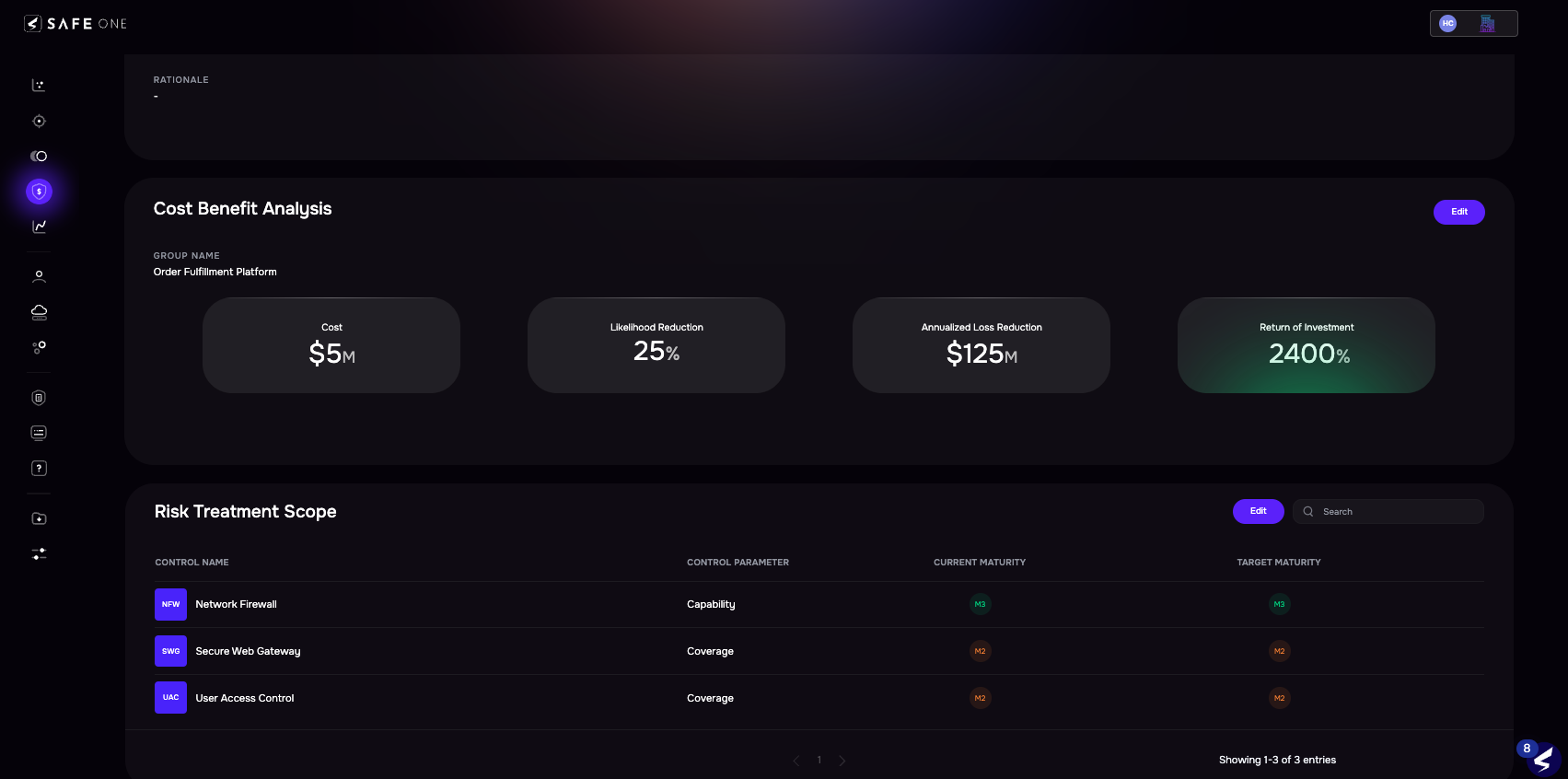
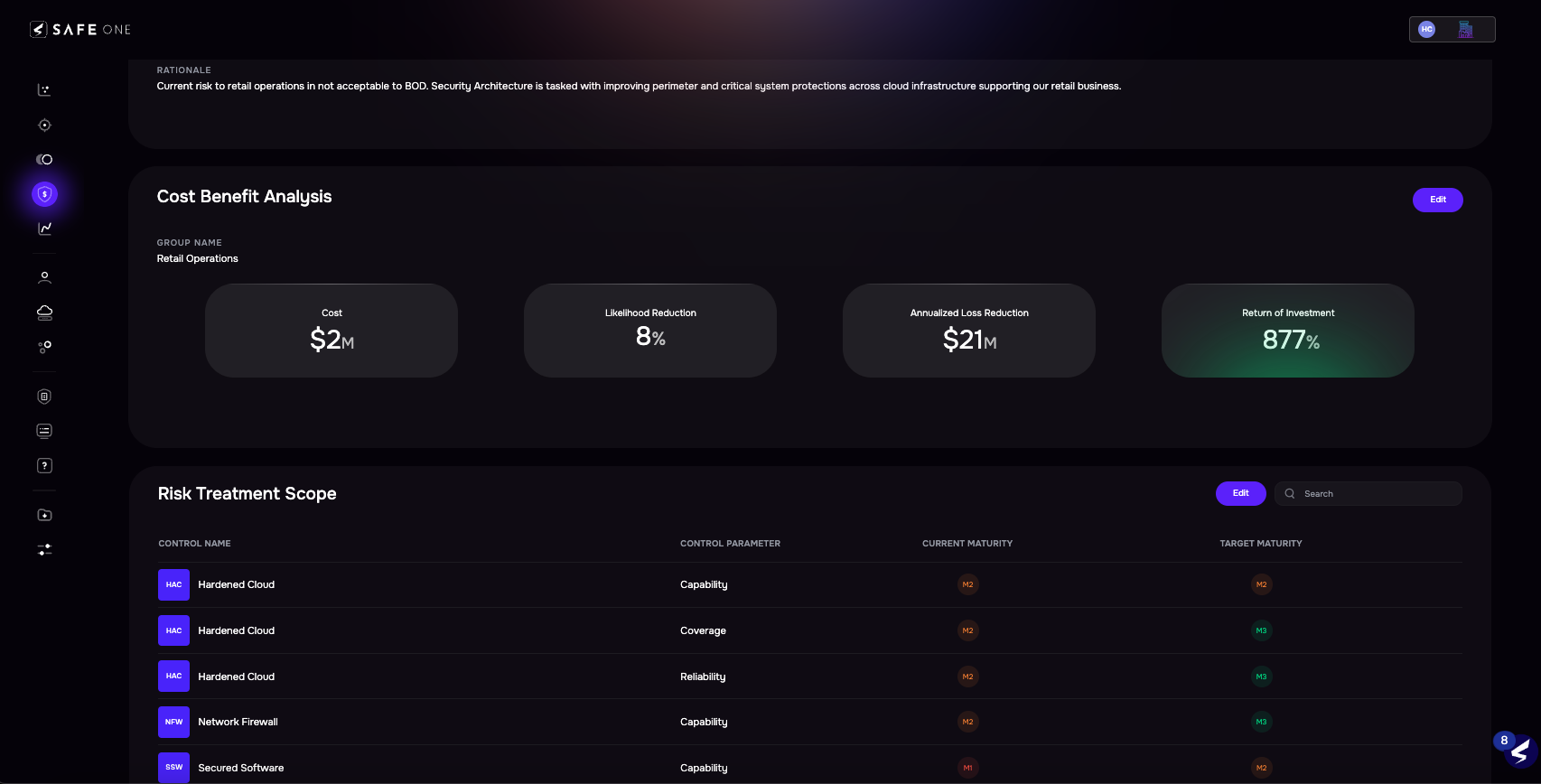
Customer Benefits
With the Risk Treatment Workflow, you can:
- Reduce Risks Operationally with Prioritization: Once you know your risks, the workflow helps you prioritize and take action on the most critical findings. By focusing on exploitable findings, internet-facing vulnerabilities, high-impact risks, and older findings, you can systematically reduce your exposure to cyber threats.
- Strategically Optimize Your Security Investments: The workflow also enables you to make informed, strategic decisions about your security investments. You can evaluate the ROI of adding new controls, increasing control coverage, purchasing or deprecating tools, and justifying existing plans. This ensures that your long-term security strategies deliver the best return on investment and align with your business goals.
- Gain Full Visibility and Measurable Results: You can monitor the status of your risk treatment efforts in real-time, giving you a comprehensive view of both operational fixes and strategic initiatives. The workflow provides clear metrics on risk reduction and ROI, allowing you to demonstrate the value of your security efforts and ensure your organization’s security investments are paying off.
Ready to Transform Your Risk Treatment Process?
The new Risk Treatment Workflow is available now as part of the SAFE One platform. This powerful tool ensures that your organization is not only identifying risks but actively managing and reducing them—delivering tangible business value in the process.
Start streamlining your risk management efforts today and experience the full impact of SAFE’s latest innovation. Schedule a demo with one of our experts and discover how the Risk Treatment Workflow can help you take control of your cybersecurity risks.

